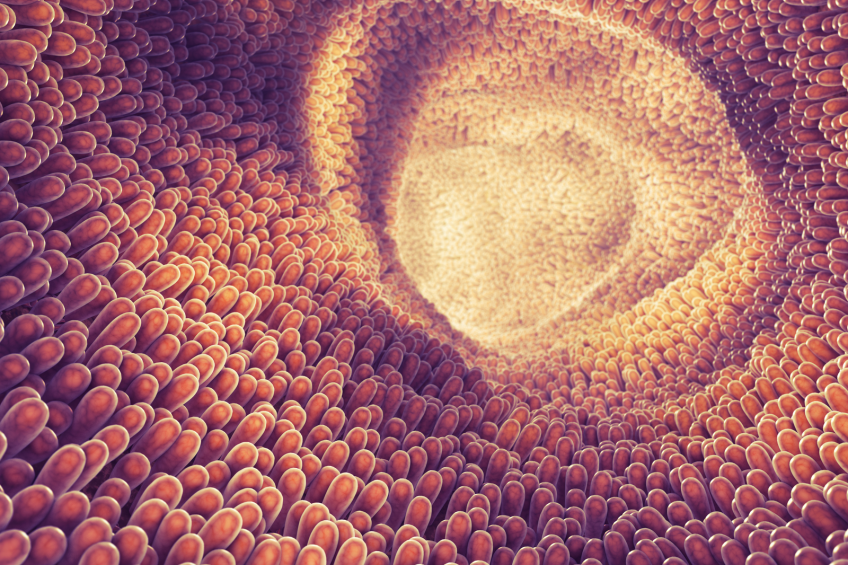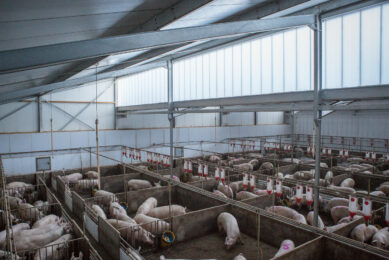Gut health: Opportunities and challenges

Optimal gastrointestinal health and functionality is essential for sustainable animal production. Effective functionality (digestion and absorption of feed) and immune status of the gastrointestinal tract (GIT) are important factors in determining animal performance. Further knowledge of the complex mechanisms involved in GIT functionality and health can help develop strategies for their modulation.
The main components of gut health that are commonly studied by the scientific community are: diet, mucosa and indigenous gut bacteria. The GIT mucosa forms a complex and dynamic equilibrium that ensures efficient functioning of the digestive system. Perhaps a more comprehensive definition of gut health would be ‘a steady state where the microbiome and the intestinal tract exist in symbiotic equilibrium and where the welfare and performance of the animal is not constrained by intestinal dysfunction’. This definition combines the three principal components of gut health mentioned, with effective digestion and absorption of feed and effective immune status (Figure 1). All these components play a critical role in GIT physiology, animal health, welfare and performance. A clear understanding of gut health requires the characterisation of the interactions between all of these components.
Figure 1 – Schematic representation of the different components of the intestinal ecology important in determining gut health and growth in production of animals. Each component interacts with the other in order to maintain a dynamic equilibrium, a state defined as gut health.

Gut microbiota
A normal, stable and diverse GIT microbiota, as well as an intact and effective GIT barrier, are required to maintain gut health. The intestinal microbiota contributes to several physiological functions such as digestion and absorption, regulation of energy homeostasis, prevention of mucosal infections and modulation of the immune system. The GIT microbiota prevents colonisation by potentially pathogenic microorganisms, provides energy for the GIT wall from undigested nutrients and regulates the mucosal immune system by means of immune stimulators. A crucial role of the microbiota is the maintenance of the GIT barrier integrity and functionality.
Dietary manipulation of the GIT microbiota composition represents an attractive tool to prevent gut health issues and to promote animal performance. Nutritional interventions should be designed to promote conditions in the GIT that would create and maintain a balance between the host and the GIT microbiota, and prevent disturbance of the structure and
function of the GIT. Therefore, a critical question that needs to be answered in order to advance our understanding of intestinal ecology is ‘what are the factors that influence the development of the GIT microbiota in farm animals?’
One of the obstacles in the advancement of our understanding of the changes in the GIT microbiome composition, its metabolic activities and interactions with the host is represented by the largely unknown number of bacterial species harboured in the GIT. In ruminants and swine, between 300 to 1,000 unique species have been estimated to be harboured in the GIT, while for gallinaceous fowl (including turkey, chicken and quail) this number is much higher – with more than 2,200 species. However, while bacterial diversity in general, and the presence of specific groups of bacteria have been associated with health benefits, it remains challenging to define dysbacteriosis because the exact composition of the GIT microbiome, and the factors influencing its development, are still largely unknown.
The gastrointestinal barrier
Several studies have been performed to elucidate the interaction between the host and the GIT microbiota. There is strong evidence that the host regulates GIT barrier functions such as mechanical, humoral, muscular, neurological and immunological elements, and that the GIT feeds back information such as energy uptake and other conditions to the central nervous system via the vagus nerve and hormones. To characterise the functions of this complex structural (GIT barrier) and functional (GIT permeability) entity, a thorough investigation of both each individual component (mucosa, microbiome, immune status, diet) and their interactions is required.
When an animal encounters pathogens, the immune system is stimulated and the animal’s growth potential is reduced, resulting in higher production costs for farmers. The release of pro-inflammatory cytokines induces behavioural changes, leads to a decrease in average daily gain and lowers protein deposition rate in muscle. Protein deposition is reduced due to metabolic changes that redirect valuable nutrients (amino acids, vitamins, minerals) to support the host’s immunological defences. Considering that the requirements of these essential nutrients is increased when an animal needs to mount an immune response, it is critical to characterise the nutritional costs required to support an effective immune response in order to optimise feed efficiency and gut health. In-feed nutritional supplementation with additives such as DSM’s range of eubiotics represent a valuable solution to restore GIT homeostasis and maintain high zootechnical performances.
Gut health biomarkers
The development of biomarkers of gut health is imperative to gain understanding of the patho-physiological events that influence the intestinal barrier, its functionality and the ecology of the GIT microbiota. While there is considerable knowledge in biomarkers that are indicative of the GIT ability to digest, absorb, transport and secrete major macro and micro-nutrients, a large gap in the literature exists in relation to biomarkers of GIT permeability, barrier function, or biomarkers that are indicative of the functional presence of beneficial microbiota or their metabolites.
Several techniques are available to assess intestinal permeability and integrity, but non-invasive methods are still far from giving a full representation of the gut microbiota. Currently available techniques, such as ingestible gas capsules, provide a non-invasive assessment method to measure a range of gas biomarkers potentially important for gut health research.
The complex microbial ecosystem inhabiting the GIT produces a wide range of metabolites that have been associated to improved or decreased gut health. An inventory of possible gut health biomarkers has been made for use in pigs and poultry, however the overall paucity of information on gut health biomarkers in farm animals is remarkable. Although gut health has been widely recognised as one of the main factors to ensure optimal performance, clarity of understanding of the pathophysiology of gut health will allow the design of specific nutritional interventions, as well as the early diagnosis of potential issues in gut health.
Despite the numerous techniques available to measure and evaluate gut health, the industry is facing the major challenge of developing a set of non-invasive biomarkers that can reliably reflect gut health status. While animal scientists work to establish whether biomarkers measured in blood, faeces, urine and breath provide a reasonable index of gut health, animal producers need a reliable index to monitor changes and potential threats in gut health to be able to act on it. Nowadays, nutritional supplementation represents a valid option to maximise nutrient intake and, ultimately, optimise performance. A balanced combination of feed additives, including probiotics, organic acids and essential oils, can make the difference when trying to achieve optimal gut health.
References available upon request.











